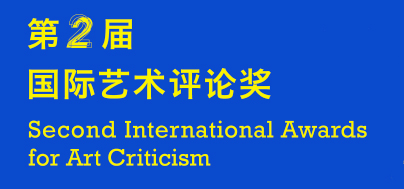
The 2nd International Awards for Art Criticism (IAAC) are currently calling publicly for papers around the world, with the contents of art criticism on contemporary art exhibitions. Papers shall be submitted by the date of October 15, 2015. In order to let more people understand and participate in the writing of art criticism, a series of lectures on art criticism is to be presented by distinguished guests with different status, educational background and practical experience invited by Shanghai 21st Century Minsheng Art Museum (M21) successively.
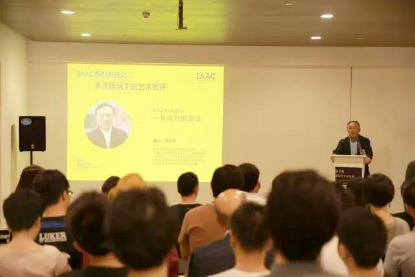
Lee Yongwoo, jury of the IAAC, made a statement
The lecture invited Prof. Lewis Biggs (Board member of the IAAC), Lee Yongwoo (jury of the IAAC 2) and Colin Chinnery (curator) to discuss the status quo of art criticism, exhibition mechanism and art ecology. At the beginning, the three honored guests delivered a speech respectively, with rich and full contents. Then Professor Ling Min, the hostess, put forward to questions related to their work and life background. The following is the review of the lecture and Q&A session.
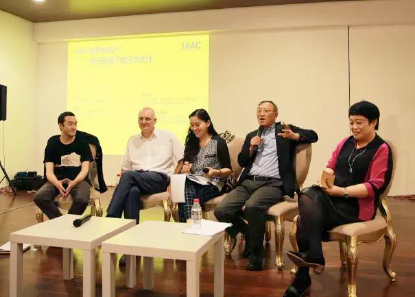
Ling Min: As we know, the three guests live in different countries. So can you talk about the status quo of art criticism and the existing problems in your own country?
Lee Yongwoo: In Korea, there are only about 400 people working as professional critics, who are registered in the artists association. The access admittance mechanism is relatively strict. To be a professional art critic, one needs to have published one book or more than three articles about art criticism, or participate in some contests held by professional magazines or art journals. Actually, it is not so easy for those 400 people to survive in the Korean art criticism field over the past 20 years. Here I use the word “survive”, which means that their life and living condition look blue. However, they keep a close relation with the biennial exhibition, art shows, museums and other art institutes, which is quite brave. Now, the role differentiation of curator and art critic becomes increasingly obscure and it is hard to distinguish from each other. An art critic can be an art scholar or interpreter of contemporary art or as a middle man to bridge artists and the audience.
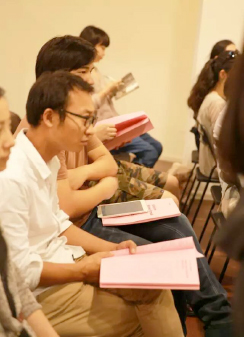
Each of the audience participating in the lecture was given a publication of the IAAC 1, namely, "Exhibition Reviews Annual 2014-15: A selection of the best entries from the first International Awards for Art Criticism"
Lewis Biggs: To survive in the art field, there are some important standards like amount and quality of works and quantity of published textbooks. And the books and published articles shall also be judged by the peers. Additionally, whether the articles are reprinted and the number of quotation can also be important indexes for measurement. Academic writing or art criticism writing takes on a double phenomenon of excessiveness or insufficiency. In terms of contents and quality, most articles are not forward-looking and it is hard to find original articles about art criticism. Curators are paid by their employers, but there is no such a position of art critics in the art department of schools, museums or art galleries. The function of art critics is to continuously repeat and go public through museums’ public education, but there is almost no attention to art education in Britain.
Colin Chinnery: As for the status quo of art criticism in China, we shall first of all look at it critically. I do not hope that critics own too much power. Critics are able to summarize a group of people into an idea or a circle. This definitely cannot be done in this time and age. Critics and curators cannot be separated, both of which shall be combined together. However, in the superficial age as nowadays, our biggest problem is that an artist can become a good artist by his/her feeling and insistence to art. But critics and curators have no favorable career development mode to do their work in a thoroughgoing manner. Therefore, critics can only transfer to do picture albums and galleries to cater others. Though there are many new art museums under the fast development in China, there is no such position of curator in any art museum. Therefore, the main income for curators comes from commercial matters, which makes them hard to be a real critic.
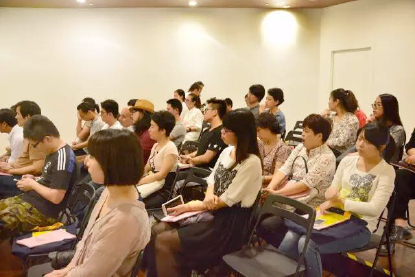
Ling Min: Mr. Lee Yongwoo and Prof. Lewis Biggs are both curators of biennial exhibitions. Curators of biennial exhibitions are all practical critics and social critics as well, who need to put forward to a contemporary theme for the biennial exhibition and find contemporary works. How do you think of the so-called "contemporary"?
Lee Yongwoo: In Korea, contemporary art refers to works in the period of recent thirty years, while modern art from the very beginning of 20th century to 1940s and 1950s. Leaving aside the academic definition or buzz word, “contemporary”, in my eyes, is the artworks we can see around. When mentioning the topic selection and theme of an art exhibition, I do not think a so-called theme or name is needed. For the general public, what they watch are pieces of works rather than the theme. They watch every piece of artwork itself to see whether it is remarkable and interact with each artwork. When selecting a theme, there must be serious and logical thinking. These works must be contemporary and can reflect some thoughtful intentions. However, it will impede the artists’ creation, just like topic given writing. Therefore, a descriptive and open theme shall be given to let them write freely and find balance.
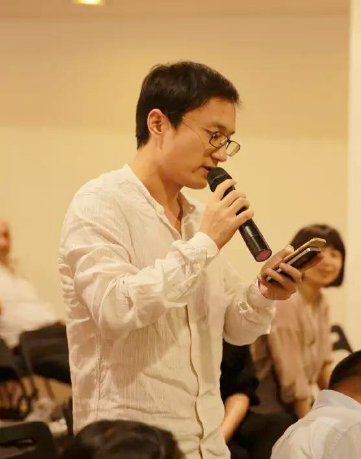
The audience put questions.
Colin Chinnery: Now the problem is how to choose artists and works when there is so much contemporary art. If you choose what you like, the public or the professional will doubt it. Therefore, there must be a reason to select works conforming to a certain theme, which is a much more fair method.
Lewis Biggs: No matter whether there is a certain theme for the biennial exhibition, it cannot be separated from the society and politics, for the biennial exhibition also serves as a good platform to solve some hot social issues. No matter how, it is a particular fantastic platform for art critics, where art critics of all levels and types can exert their talent. Its biggest function lies in its vitality and creativity. The biennial exhibition itself is not an institute and it is experiencing a process of continuously renewing itself. Even the Venice Biennale, with the longest history, needs to renew itself when planning a new exhibition. Therefore, recreation is quite important to think some creative themes so that each exhibition is just like a prototype.
Thanks go to those volunteers who gave assistance and organized the records. They are Hua Linghao, Ye Lifeng, Zhou Yanying, Qian Yuan, Hang Tian, Ma Sijie, Fan Zirui and Chen Zeyue.